Examining Rocks and Minerals through Visual Artistry
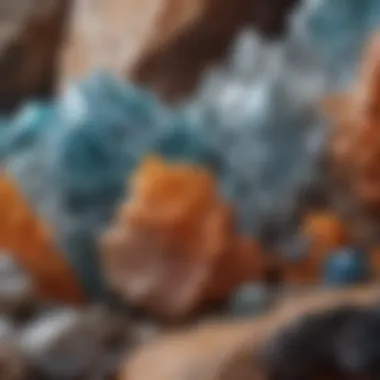

Intro
Rocks and minerals form the backbone of our planet, yet their complexity often goes unnoticed by many. From the vibrant hues of agate to the shimmering facets of quartz, exploring these natural wonders offers more than mere aesthetics. It invites us into a world where geology intersects with art, science, and education. Photographs hold the power to draw us into this realm, allowing us to appreciate the intricacies that our eyes may overlook in the raw forms.
Imagery serves multiple purposes in the study of rocks and minerals: it informs, inspires, and educates. In this article, we take a closer look at how images can enhance our understanding of geological specimens. We will explore categories of rocks and minerals, delve into photography techniques to capture their essence, and elucidate the importance of imagery in educational settings and personal collections. As the technology evolves, so does the ability to preserve these stunning visuals, making the exploration of this subject all the more relevant.
Through engaging narratives and detailed analysis, we aim to provide a comprehensive guide that appeals to both seasoned collectors and curious enthusiasts alike. It’s not just about owning beautiful specimens; it’s about recognizing their stories and understanding their roles within our natural environment.
"The beauty of a mineral is not merely skin deep; it is a window into Earth's history."
Join us as we embark on this visual journey through the compelling world of rocks and minerals.
The Importance of Visuals in Geology
In the study of geology, images serve as invaluable tools. They not only capture the physical characteristics of rocks and minerals but also communicate complex information in a way that words often cannot. Visuals make it easier to grasp a subject that can be inherently difficult to understand. Whether one is exploring sedimentary layers in a cliff face or examining the intricate patterns in a mineral's crystal structure, visuals bring life to what might otherwise be an abstract concept.
Understanding Imagery in Earth Sciences
Images play a critical role in the earth sciences, where they act as a bridge between theory and reality. Geologists rely on photographs, diagrams, and maps to offer a tangible representation of various phenomena. For instance, a striking photograph of a volcanic eruption not only displays sheer power but also tells a story about the geological processes at play. By understanding how to interpret these images, one can gain insights into the chemical compositions and formations of the rocks depicted.
- Photographs provide context: They help geologists situate their observations within a specific landscape or geological formation. This is essential for making informed decisions during fieldwork.
- Diagrams simplify complex information: When it comes to teaching or understanding the intricate processes involved in geology, well-crafted diagrams can break down complicated systems into digestible components.
Consider geological maps, which are designed to convey not just the distribution of rocks but also their age and nature. The visual representation permits geologists to make predictions about the landscape's development over time, offering a clearer understanding of how different layers interact.
The Influence of Images on Scientific Discovery
Scientific discovery is often guided by curiosity and observation, and imagery plays a crucial role in both. Early geological surveys relied heavily on drawings and sketches, laying the groundwork for future explorations. As technology evolved, so did the quality and type of images available, expanding the horizons of geological studies. Today, high-resolution satellite imagery and three-dimensional modeling have transformed how scientists view their subjects.
- Visual evidence leads to theories: Discoveries of new minerals or rock types often begin with images captured in remote locations. These visuals can trigger a series of hypotheses that further scientific inquiry.
- Sharing findings: Photographs enable communication among scientists across the globe. When research is visually documented, it's easier to share findings through publications and presentations, galvanizing collective efforts in geology.
"Images can ignite a passion for geology that mere words may fail to inspire. They show the world in ways textbooks cannot."
In summary, visuals are not just supplementary; they are intrinsic to geological research and communication. They bring depth and clarity, turning the study of earthy materials into a vibrant, engaging endeavor—paving the way for both new discoveries and a deeper appreciation of our planet's story.
Categories of Rocks and Minerals
Understanding the various categories of rocks and minerals is crucial for any enthusiast or collector looking to deepen their appreciation of the Earth’s materials. It brings clarity to the wide assortment found in nature by grouping them according to their formation and characteristics. Each category not only tells unique geological stories but also showcases different visual aspects that can captivate any observer.
Igneous Rocks
Igneous rocks are formed from the cooling of magma or lava, making them essentially the result of volcanic activity. They are classified into two categories: intrusive and extrusive. Intrusive igneous rocks, like granite, solidify below the Earth’s surface, while extrusive types, such as basalt, form after magma spills onto the surface. This can result in dramatic textural differences and color variations that are a dream for photographers.
Specifically, the crystallization of minerals within igneous rocks creates stunning visuals. For instance, the feldspar in granite can appear as large, visible grains, while basalt tends to have a finer texture, lending a sleek appearance. Collectors should pay attention to these characteristics when documenting their finds, as the imagery captures the essence of the rock's origin.
Sedimentary Rocks
Sedimentary rocks tell stories of their formation over time. Created from the accumulation of sediments, these rocks often have a layered appearance, which speaks volumes about the environmental conditions they represent. Think of sandstone or limestone—each layer a page in a history book, revealing the interactions of water, air, and biological activity.
The beauty in sedimentary rocks lies in their patterns and colors, often varying from earth tones to bright hues, depending on mineral content and the environment of deposition. When capturing these images, consider the lighting, as it can enhance the distinct layering and textural features. Moreover, incorporating a bit of natural context, such as plant life or water nearby, can provide a stunning backdrop that augments the visual narrative.
Metamorphic Rocks
Metamorphic rocks are formed under intense pressure and heat, transforming existing rocks into newer forms. This process can create fascinating characteristics such as foliation or banding, which not only make these rocks visually striking but also invite curiosity about the geological forces at play.
Take schist, for example; its shiny, mineral-rich surfaces shimmer under direct light, showcasing an appealing contrast with its rugged texture. On the other hand, marble’s smooth, polished surfaces can mesmerize anyone who gazes upon its intricate veining. When photographing metamorphic rocks, capturing the subtle nuances in texture and color can lead to breathtaking images that highlight their dynamic nature.
Common Minerals
Minerals are the building blocks of rocks and trigger a wealth of curiosity among collectors and enthusiasts alike. They come in various forms, each with distinct properties that can influence not only their appearance but also the way they interact with light. Minerals like quartz can vary in color from clear to amethyst, while mica displays excellent cleavage, allowing for thin, glimmering sheets.
Photographers should focus on the minute details that set each mineral apart—perhaps capturing the way light refracts through a clear crystal or the reflection off a dark surface of a polished stone. Educating oneself on the identifying features of different minerals can significantly enhance one’s ability to document and appreciate them in their raw beauty.
Techniques for Capturing Geological Imagery
Capturing the essence of rocks and minerals through photography is more than just a simple click. It’s about immersing oneself in the intricate details and showcasing the unique characteristics these natural wonders possess. The art of taking geological imagery serves multiple purposes: it preserves visual records, educates the public, and fosters appreciation for the world beneath our feet. In this section, we will delve into specific techniques that elevate geological photography and make it a rewarding pursuit for collectors, educators, and enthusiasts alike.


Macro Photography for Detailed Textures
When it comes to showcasing the beauty of rocks and minerals, nothing beats macro photography. This technique allows photographers to capture minute details that may go unnoticed to the naked eye. The textural patterns, mineral composition, and unique crystalline structures can be highlighted beautifully through a macro lens.
Using a macro lens grants you the ability to zoom in on intricate details like the glossy sheen of a pyrite crystal or the swirling patterns of a banded agate. As you set up your shots, consider these essential elements:
- Stability is Key: A sturdy tripod can keep your camera still; this is crucial for taking sharp images at greater magnifications.
- Depth of Field: Adjust your aperture settings to control what is in focus. A wider aperture creates a shallow depth of field, isolating the subject beautifully against a blurred background.
- Texture Appreciation: Capture multiple angles to show the texture involved fully, illuminating the natural beauty of the specimen.
Ultimately, employing macro photography not only enhances what you see but transforms the mundane into the magnificent.
Using Natural Light vs. Artificial Light
Lighting plays a significant role in geological imagery. Choosing between natural and artificial light can impact the final outcome in color rendering and texture visibility. Here’s a closer look at both options:
- Natural Light:
- Artificial Light:
- Many collectors find that shooting outdoors during the golden hour—the hour after sunrise or before sunset—provides the softest, most flattering light. This can accentuate colors and reveal nuances in texture that harsh midday light can wash out.
- Reflections can sometimes complicate the image; using polarizing filters can help tame those unwanted glares and enhance colors all around.
- On the other hand, artificial lighting equips you with greater control over your environment. Utilize softboxes or LED lights to create a well-lit setup, which can be adjusted to prevent shadows.
- Experimenting with different light angles and sources can yield fascinating results, revealing crystalline structures and surface details that might otherwise remain hidden.
Both lighting types lend themselves to vivid, impactful images. Understanding their respective strengths can aid you in making the right choice based on the desired outcome of your shoot.
Post-Processing Techniques
After capturing your images, the next step is to refine them through post-processing. The tools available today can elevate a good photograph into a great one. While some may view editing as a way to manipulate reality, it can also serve to enhance true beauty. Here are some essential post-processing techniques to consider:
- Basic Adjustments: Start with exposure, contrast, and saturation. Fine-tuning these elements can bring out the colors and details that might be dulled in the raw image.
- Sharpening: Enhancing sharpness can highlight those fine details you meticulously captured in macro shots. However, be cautious of overdoing it, as this can introduce noise.
- Color Correction: Implement color balance adjustments to ensure that the hues accurately reflect the natural appearance of the minerals.
- Cropping and Framing: Sometimes, a simple crop can shift the focus of the image, drawing attention to the core elements of the rock or mineral.
The Role of Imagery in Education
Imagery plays a key part in the education of geology, shaping how students and enthusiasts grasp the complexities of rocks and minerals. Through visual representation, learners can connect abstract concepts with the real world, making it easier to understand and retain knowledge. By integrating imagery within the curriculum, educators can bridge the gap between theoretical knowledge and empirical observation, which is especially crucial in a subject that is inherently visual and tactile.
Visual Learning in Geology
In the realm of geology, many people are visual learners. This means that they comprehend better when information is presented through visuals rather than text alone. For instance, an image of an igneous rock, like granite, illustrates its crystalline structure and unique colors far more effectively than a written description could. Here are a few points that highlight the importance of visual learning:
- Memory Retention: Studies show that visuals enhance memory retention. When students look at images alongside their readings, they are more likely to remember the material.
- Quick Comprehension: Rocks and minerals can be quite varied in their compositions and appearances. Visual aids help simplify complex information, allowing quicker comprehension of essential concepts.
Such visuals often act as mental shortcuts, here today and gone tomorrow, transforming the way information is processed.
Incorporating Images into Teaching Materials
Images serve as a fundamental component of teaching materials in geology. Including high-quality photographs and diagrams in textbooks and presentations enriches the educational experience. Examples of how to successfully incorporate images include:
- Annotated Diagrams: These can display the internal structures of minerals, detailing elements that might otherwise be overlooked. For instance, a labeled image of quartz can help students identify distinct features like crystal faces and cleavage.
- Comparative Images: Showing images of different rock types side by side aids in understanding their unique characteristics and forming classifications. This visual comparison cements the differences between, say, basalt and pumice, which might not be apparent via just text.
Furthermore, utilizing digital platforms allows for interactive imagery, where students can click on various parts for more information, making learning more dynamic and engaging.
Enhancing Field Studies through Documentation
Field studies are an essential part of geological education. Documenting these experiences through imagery enables students to record and reflect on their findings accurately. Here’s why this practice is valuable:
- Visual Records: Photographic documentation provides a visual record of the geology encountered during excursions. This helps in later discussions and assignments, as students have concrete examples to refer back to.
- Analysis of Findings: Images taken during fieldwork can be used for analysis and presentations. For instance, students can show before-and-after pictures of erosion sites or mineral cores. This not only grounds them in reality but also cultivates a more profound understanding of geological processes.
"Images serve as powerful tools in understanding geology, allowing students to visualize complex processes and make meaningful connections to the material world."
Visual Documentation in Collecting
In the realm of geology, visual documentation stands out as a fundamental practice for hobbyists and serious collectors alike. It's more than just snapping a picture; it's about capturing the essence of a rock or mineral, preserving its beauty and context for years to come. This rich documentation serves as a critical link between the collector and the broader geological narrative, enabling a deeper understanding and appreciation of Earth’s treasures.
The importance of visual documentation cannot be overstated. For collectors, it provides a means to track and showcase their journey through the world of minerals. Imagine ferrying home a remarkable quartz crystal from your latest expedition. A photograph of that crystal, perhaps nestled in its natural setting, becomes a story in itself. It evokes memories, shares insights about location, and reflects the conditions under which the collection was made.
Tracking Collections Visually
Keeping visual records of one’s collection offers immense benefits. For one, it aids in maintaining a comprehensive inventory. By documenting each piece with images, collectors can easily revisit their collections without the need to physically handle every item. Furthermore, visual logs help in tracking changes over time—such as wear and tear, color shifts, or crystallization changes—allowing collectors to monitor the health of their specimens.
- Image Quality: Clear, high-resolution images can preserve minute details and textures, which are vital for identifying minerals accurately.
- Contextual Importance: Including images of labels, geological settings, and even the collection process provides invaluable context for each specimen.
- Ease of Access: With visual records stored digitally, collectors can showcase their collections to friends, family, or the online community, enhancing engagement without the hassle of physical display.
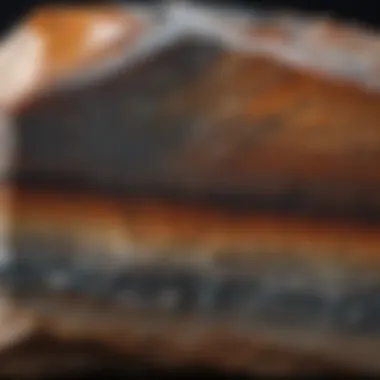
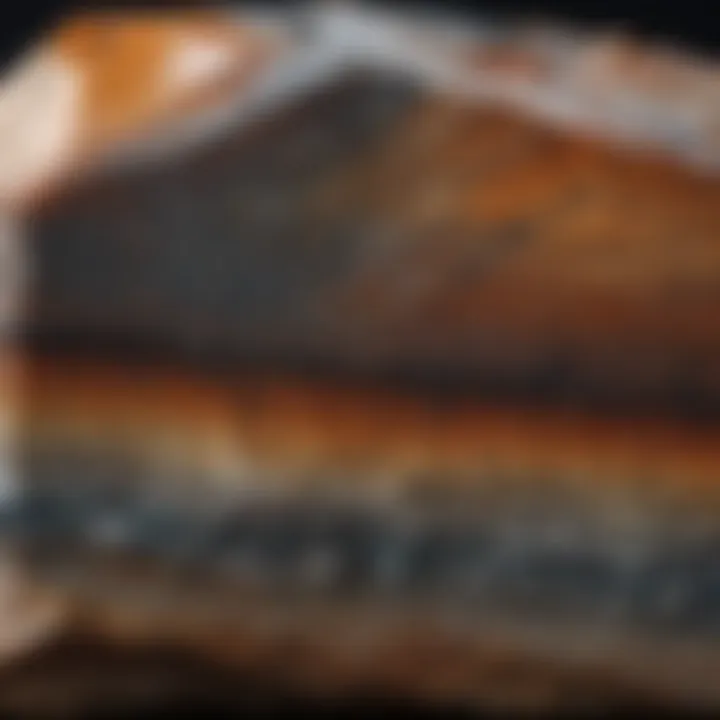
Sharing Images within Communities
The act of sharing images plays an essential role in fostering community bonds and enhancing collective knowledge among rock and mineral enthusiasts. Social platforms like Reddit or dedicated Facebook groups provide fertile ground for exchanging tips, feedback, and encouragement. When collectors share their photographs, they invite critique and insight, benefiting not only themselves but also their peers.
- Learning Opportunities: Images can prompt discussions about identification, preservation techniques, or even the geological history behind a specimen.
- Inspiration: When collectors see others' images, they often feel inspired to explore new locations or methods for their collections.
- Preservation of Knowledge: A well-documented image can illustrate species variations or locale-specific traits, adding depth to the shared understanding and appreciation of geology.
Creating Digital Catalogs
In a digital age, cataloging collections has evolved. No longer confined to musty notebooks, collectors now have the ability to develop digital catalogs that combine images with detailed descriptions. By using tools like Google Sheets or specialized mineral database apps, collectors can create an easily navigable archive of their collections.
- Organization: Digital catalogs allow for systematic categorization, making it simple to locate specific specimens or track down missing pieces.
- Accessibility: A well-structured catalog can be accessed anywhere; whether in the field or at home, it provides instant reference.
- Backup & Security: Cloud storage solutions ensure that the collector’s hard-earned visual records are preserved against loss or damage.
"Visual documentation not only celebrates geological specimens, but it also creates a legacy that connects the past, present, and future of our understanding of these natural wonders."
In summation, visual documentation is indispensable in the collecting community. By facilitating tracking, sharing, and cataloging, it embraces the physical beauty of rocks and minerals while enriching the collective wisdom within the field. Understanding and employing these visual techniques not only enhances personal collections but also elevates the entire geological discourse.
Preservation Techniques for Rocks and Minerals
When it comes to the realm of geology, preserving the beauty and integrity of rocks and minerals is paramount. These natural wonders can face various threats, from environmental factors to physical damage. Proper preservation goes beyond mere aesthetics; it plays a critical role in maintaining their educational, scientific, and cultural value. For collectors and enthusiasts alike, understanding preservation techniques is essential to safeguard these earth treasures for future generations.
Proper Display for Longevity
The display of rocks and minerals should not be an afterthought. How one presents these items can significantly influence their longevity. Here are some factors to consider when displaying your collection:
- Avoid Direct Sunlight: Ultraviolet rays can fade colors and degrade minerals over time. A cool, dark space often works best.
- Temperature and Humidity Control: Fluctuations in temperature and humidity can cause minerals to crack or mold. Aim for stable conditions to prevent these issues.
- Use of Appropriate Materials: It’s essential to select display cases made from acid-free materials. Standard glass can sometimes harm minerals if trapped dust and moisture accumulate.
- Non-Toxic Adhesives: When securing smaller pieces, ensure that the adhesive is safe for use with minerals.
- Gentle Handling: When rearranging or cleaning displayed rocks, do so with care. Using gloves can prevent oils and dirt from affecting the surfaces.
Using methods like these ensures that your collection not only remains visually appealing but also retains its scientific value.
Storing vs. Displaying: Best Practices
Every collector faces the question of whether to display their prized rocks and minerals or store them safely away. Each method has its unique advantages, and understanding these can make all the difference:
- Display: Showcase your favorites but be mindful of the conditions. Displaying encourages appreciation and can spark curiosity in others, which is vital for sharing knowledge and enthusiasm for geology.
- Storage: Protects against potential damage and environmental factors. Use padded boxes or lined drawers and label your collection to maintain order and ease of access.
Best of Both Worlds
Finding a balance is key.
- Consider displaying more resilient specimens while storing more delicate ones.
- Create a rotation system for your collection so that everything gets its time in the spotlight without compromising safety.
"Preservation methods not only protect rocks and minerals but also ensure the stories they hold remain intact for future generations to discover."
By understanding and applying various preservation techniques, collectors can enjoy their geological treasures while understanding the underlying importance of safeguarding them. This knowledge feeds into a broader appreciation of our planet's geological processes and heritage.
The Evolution of Mineralogy Photography
The field of mineralogy has witnessed a remarkable transformation through the evolution of photography. Immortalizing rocks and minerals through the lens not only streamlines scientific inquiries but also opens windows into the intricate beauty of the earth. This section outlines pivotal developments in photography that have molded the depiction of geological wonders.
Advancements in Camera Technology
The advances in camera technology have revolutionized the way mineralogists and collectors capture the essence of rocks and minerals. In the early days, specialized cameras and cumbersome film were the norms, influencing the quantity and quality of geological documentation. However, with the invention of high-resolution digital cameras, the dynamics of mineral photography were turned on their heads. Today’s cameras, equipped with macro capabilities, allow for detailed capture of crystal formations, textures, and surface intricacies that were previously hard to achieve.
The advent of smartphones further democratized this art form, enabling amateur photographers and hobbyists to explore mineral photography without the burden of heavy equipment. With a few taps, one can showcase any piece, from vibrant quartz to vivid malachite, guiding others into a deeper appreciation for these natural sculptures.
Digital Imaging and Software Enhancements
Digital imaging technologies have also marked a significant leap in mineralogy photography. With the help of software enhancements, photographers can now correct colors, adjust contrast, and refine clarity post-capture. This means the colors of a mineral sample can be represented in their truest form, a process crucial for accurate scientific study.
Moreover, advanced imaging techniques like focus stacking allow for the combination of multiple images to create a single, sharp photograph from front to back. This technique enhances depth and detail, highlighting features that might otherwise go unnoticed. In the world of mineralogy, where details often dictate identification and classification, the ability to present comprehensive and detailed images can strengthen the quality of study as well as foster a deeper appreciation among enthusiasts.
Emerging Trends in Geoscience Visualization
As we move forward, emerging trends in geoscience visualization are making waves in how rocks and minerals are represented. Many contemporary photographers are experimenting with 3D imaging, which brings another layer of understanding to geology. When viewed in three dimensions, layers of complexity become apparent, revealing hidden structures and data that help scientists theorize about formations and processes occurring underground.
Additionally, augmented reality (AR) and virtual reality (VR) technologies are finding their way into the field. These innovations provide an immersive experience where viewers can explore geological formations as if they are walking through a real environment. Such advancements enhance not just our visual interaction with rocks and minerals, but also create opportunities for sharing knowledge among students, researchers, and hobbyists alike.
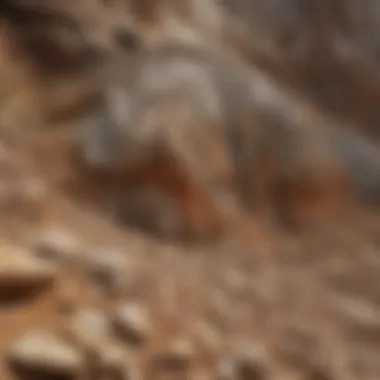
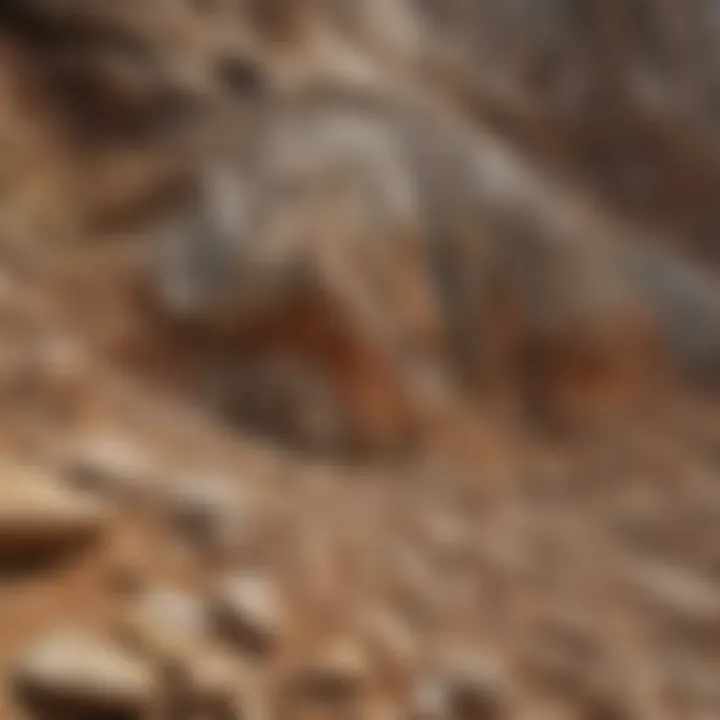
"Through the lens of modern technology, geoscience is no longer just about looking at rocks – it’s about experiencing them in entirely new dimensions."
Each of these advancements points to a vibrant future, where the art of photographing geological specimens aligns seamlessly with scientific inquiry. As we inch closer to new horizons in mineralogy photography, the question looms: How will the tools we utilize reshape our understanding of the very earth beneath our feet?
Case Studies in Rock and Mineral Photography
The field of rock and mineral photography offers a unique lens through which to appreciate the intricate beauty of our planet. This section aims to highlight the significance of drawing on case studies to understand the methods and impacts of photographers in this specialized discipline. Through examining real-life examples, we grasp not only the technical skills involved but also the stories behind each image. This not only informs aspiring photographers but also deepens collectors' appreciation for the artistry that encapsulates geological specimens.
Analyzing the works of noted photographers reveals insights into their unique perspectives and the diverse techniques employed. It shines a light on various strategies that can be adopted in one's own practice. Additionally, engaging with case studies allows us to see how a photograph can influence the way rocks and minerals are perceived and understood.
Notable Photographers in the Field
In the realm of rock and mineral photography, several names shine bright. Each contributes uniquely to the artistic expression of geology. One such photographer is Michael Eastman, known for his remarkable ability to capture colors and textures, bringing out the hidden details within common stones. His work illustrates how patience and skill can yield striking results that resonate emotionally.
Another figure worth mentioning is Massimo Dutti, whose photographs often tell a story. They showcase the rugged landscapes in which these minerals are found, creating a context and depth to studies in geology. Dutti’s approach underscores the geographical connection, placing rocks not just as specimens but as part of a larger narrative.
Engagement with their portfolios allows photographers to parse out new techniques and cultivate their individual style, allowing individuality to flourish.
Impactful Scientific Publications
The intersection of photography and geology doesn’t just influence art but also contributes significantly to scientific dissemination. Publications such as the American Mineralogist frequently feature visually striking images that serve both educational and research purposes. They do more than show pretty rocks; they offer clear, detailed visuals that accompany important research findings.
A particularly compelling example is the Journal of Sedimentary Research, which often integrates photography that plays a crucial role in illustrating sediment data and mineral compositions. These visual aids enhance the reader’s understanding, providing an approachable way for complex information to make sense.
"A picture is worth a thousand words, especially if that picture helps to make advancements in geology clear to the layperson."
These case studies reflect an essential practice in geology—drawing connections that spur insight and understanding. With access to impactful photographs and thoughtful analyses, both collectors and novices alike are equipped to appreciate the complexities behind the rocks they cherish.
Cultural Significance of Rocks and Minerals
The interplay between geology and culture is profound and multifaceted. Rocks and minerals are not just physical objects; they carry significant historical, artistic, and spiritual narratives woven into the fabric of human civilization. This section aims to shed light on the cultural relevance of these natural elements, emphasizing their roles in art, symbolism, and traditional practices.
Art and Symbolism in Geological Imagery
From ancient civilizations to contemporary societies, rocks and minerals have found their way into various art forms. Artists have often drawn inspiration from the textures, colors, and forms of these geological wonders. For instance, consider the brilliant hues of malachite or the sparkling clarity of quartz; these stones inspire creation, embodying both beauty and depth.
In many cultures, certain minerals hold specific symbolic meanings. Jade, for instance, is not only valued for its beauty but also revered in many Asian cultures as a symbol of purity and tranquility. The intricate carvings done on jade pieces often reflect mythological stories or cultural beliefs, showcasing geology's not just physical but emotional depth.
Visual representation further enhances these symbols. Photographers and artists have harnessed geological imagery to convey deeper messages. A photograph of the rugged texture of granite might speak to resilience, while the smooth, flowing lines of some sedimentary rocks could evoke calmness. By capturing these elements, they invite viewers to explore the undercurrents of meaning residing within the natural world.
"Rocks are on the ground beneath our feet, yet their stories reach above the clouds, intertwined within our cultural narratives."
Geology's Influence on Traditional Practices
Traditions surrounding geology vary greatly across different cultures, and often, these practices help sustain the community's social and spiritual harmony. For indigenous groups worldwide, specific rocks and minerals can represent ancestral spirits, guiding their connection to the earth and their heritage.
In the realm of construction and craftsmanship, local stones have historically defined architectural styles. Take, for example, the use of limestone in many ancient buildings in Europe; its presence helped shape cultural identity, distinct from other regions.
In some places, minerals like salt or clay hold significant economic and ritual importance. The extraction and usage of these materials often underscore long-standing traditions and community cooperation. Crafting pottery from local clay not only ensures cultural continuity but also fosters a sense of pride and identity among artisans.
In both education and group interactions, these traditional understandings reinforce knowledge transfer and community bonding. Individuals growing up in these environments learn to value their geological heritage, recognizing its influence on their lives and the need to respect and preserve it.
In summary, the cultural significance of rocks and minerals is a tapestry woven with threads of history, art, and tradition. For rock and fossil collectors, understanding these narratives can deepen their appreciation for the items they cherish, turning simple collections into meaningful symbols of their connection to the earth.
Final Thoughts on Rocks and Minerals through the Lens
In wrapping up our journey through the vibrant world of geological imagery, it becomes clear that the lens we peer through plays a critical role in how we engage with the earth's natural wonders. The art of capturing rocks and minerals isn’t just about taking a pretty picture; it bridges science and creativity, revealing layers of understanding that inform both hobbyists and seasoned collectors. These images serve as gateways, inviting curious minds to explore the details and subtleties that lie within each specimen.
Reflections on the Art of Geology
The beauty of geology resides in its complexity and diversity. Each rock or mineral tells a story and through photography, we can tell those stories more effectively. Images allow us to visualize textures, colors, and structures that are often overlooked in person. High-resolution photographs capture the fine grains of sediment rocks or the shimmering facets of crystalline minerals, drawing the viewer into a world rich with detail.
"A photograph isn’t just an image; it’s a moment in time that can evoke emotion and spark curiosity."
Moreover, artistic approaches to geological imagery can elevate scientific content into something profoundly engaging. Techniques like macro photography or alteration in lighting can reveal aspects that might not be seen with the naked eye. The nuances of light can showcase deep blue azurite or the fiery flashes of iridescence in labradorite, transforming a simple collection into an art gallery accommodating both aesthetics and educational value.
The Future of Geological Imagery
Looking ahead, it’s impossible to ignore the broader implications technology has for geology. With the rise of digital media and advanced imaging techniques, the possibilities for depicting rocks and minerals are expanding rapidly.
- Virtual Reality (VR): Imagine wandering through a virtual museum where every mineral can be examined up close, providing a 360-degree view of even the tiniest details.
- 3D Printing: This technology allows for the replication of specimens, making it possible to study tactile interactions with rocks without risking damage to original pieces.
- Social Media Platforms: These platforms provide a space for sharing and discussing geological imagery, connecting enthusiasts from around the world instantly.
Such advancements not only enhance visual appreciation but also facilitate a collaborative atmosphere among geologists, educators, and collectors. As these technologies improve, the potential for democratizing access to geological knowledge grows. The commitment to capturing and sharing the incredible variety of the earth’s materials ensures that the passion for geology continues to flourish.



